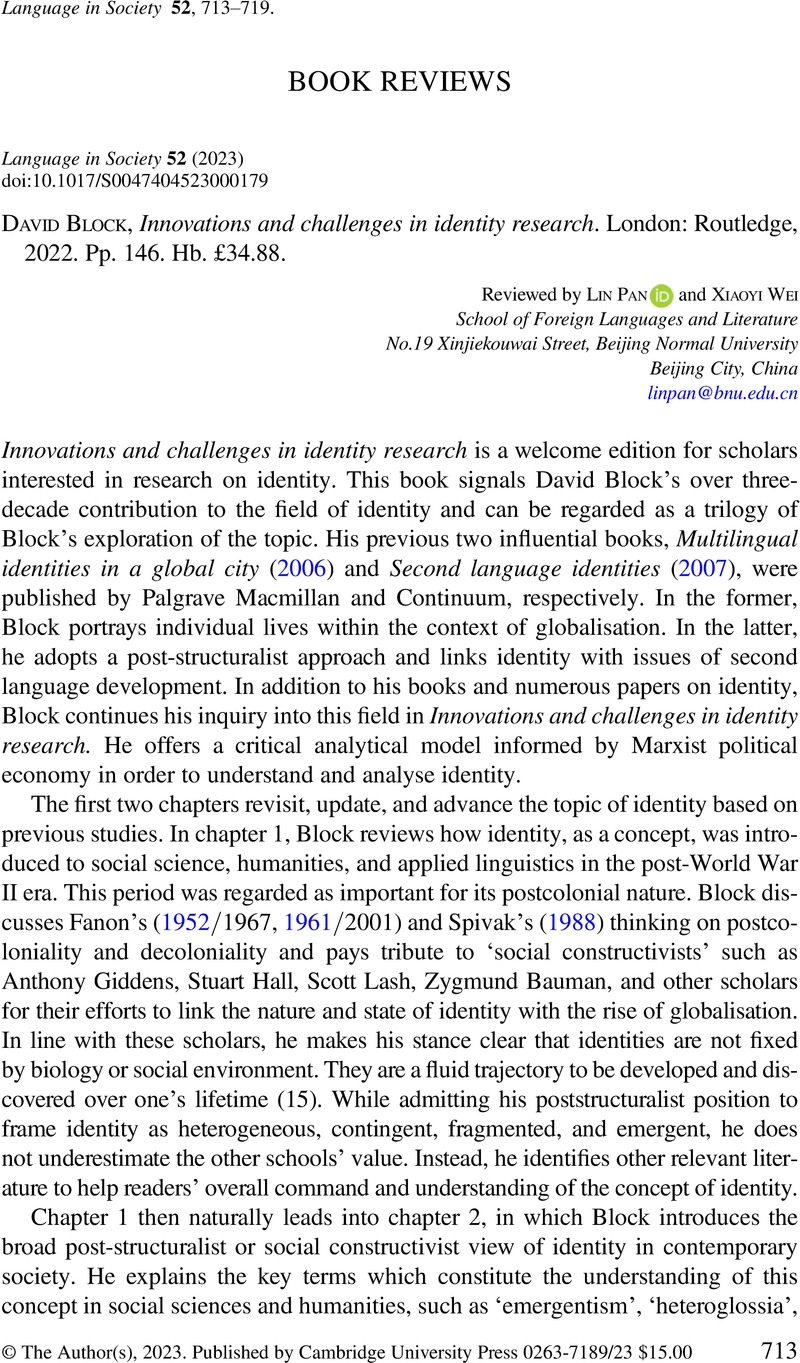No CrossRef data available.
Article contents
David Block, Innovations and challenges in identity research. London: Routledge, 2022. Pp. 146. Hb. £34.88.
Review products
David Block, Innovations and challenges in identity research. London: Routledge, 2022. Pp. 146. Hb. £34.88.
Published online by Cambridge University Press: 25 May 2023
Abstract
An abstract is not available for this content so a preview has been provided. Please use the Get access link above for information on how to access this content.

- Type
- Review
- Information
- Copyright
- Copyright © The Author(s), 2023. Published by Cambridge University Press
References
Block, David (2006). Multilingual identities in a global city: London stories. London: Palgrave Macmillan.10.1057/9780230501393CrossRefGoogle Scholar
Harré, Rom (2004). Positioning theory. Online: www.massey.ac.nz/~alock/virtual/ positioning.doc.Google Scholar
Harré, Rom (2012). Positioning theory: Moral dimensions of social-cultural psychology. In Valsiner, Jaan (ed.), The Oxford handbook of culture and psychology, 192–206. Oxford. Oxford University Press.Google Scholar
Marx, Karl (1844/1988). Economic and philosophic manuscripts of 1844. Amherst, NY: Prometheus Books.Google Scholar
Marx, Karl (1867/1990). Capital: A critique of political economy,vol. 1. Harmondsworth: Penguin.Google Scholar
Marx, Karl, & Engels, Friedrich (1846/1998). The German ideology. London: Lawrence and Wisart.Google Scholar
Spivak, Gayatri Chakravorty (1988).‘Can the subaltern speak?’ In Nelson, Cary & Grossberg, Lawrence (eds.), Marxism and the interpretation of culture, 271–313. Urbana: University of Illinois Press.Google Scholar



